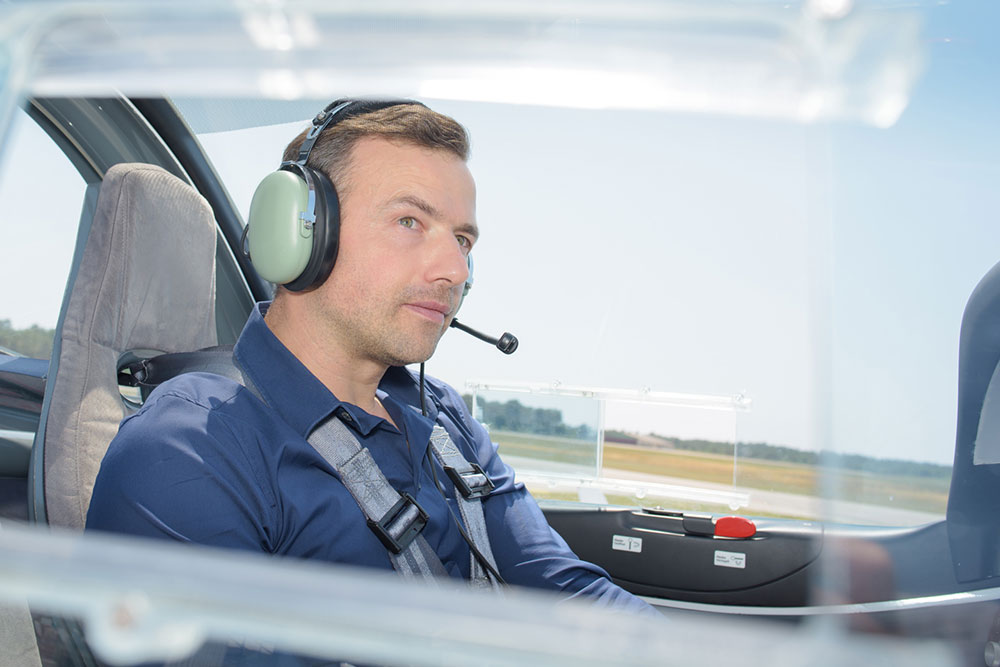Types of Pilot Training Courses and Tips to Choose
Those wanting to become a pilot can consider signing up for a pilot training course at an aviation academy. While these courses are challenging and involve extensive education, they prepare candidates to become good pilots and excel in the field. Since different pilot training courses have different features, one should compare them before choosing.

Types of pilot training courses
Understanding the various pilot training courses is crucial, regardless of whether one wants to become a pilot for commercial airlines, corporate airlines, or choose another aviation career. One must take several courses to progress from a student pilot to an ATP:
- Student pilot
The journey starts by becoming a student pilot. Student pilot courses provide theoretical knowledge about navigation, aerodynamics, aircraft systems, meteorology, aviation regulations, and other topics. Those who are 16 years old and proficient in English can apply for a student pilot training course. This course allows students to fly solo under supervision without carrying passengers or performing commercial operations. At the end of the course, individuals must pass the written exam and obtain a medical certificate from an AME (aviation medical examiner) to obtain a student pilot license. - Private pilot
Private pilot training courses prepare candidates to become pilots of non-commercial aircraft. To be eligible for such a course, one must be at least 17 years old and proficient in English. The training includes topics like navigation, aircraft maneuvers, and emergency procedures. After the training, candidates are allowed to fly small aircraft independently. Private pilot license holders are authorized to fly aircraft for personal use and carry passengers but are still not eligible for compensation. - Commercial pilot
The commercial pilot training course curriculum covers more advanced aviation topics, such as advanced aerodynamics. Commercial pilots are trained to fly larger aircraft. Some also acquire an instrument rating (IR), which qualifies them to fly in extreme weather conditions just by looking at different instruments in the airplane. Individuals can progress in their aviation careers with a commercial pilot license and get compensated handsomely for their services. - Certified flight instructor (CFI)
The CFI course prepares one to become a qualified and certified aviation educator who mentors different types of pilots. Their main responsibility is to provide prospective pilots with the knowledge, abilities, and methods required to fly aircraft safely. They also provide on-the-ground and in-the-air flight training. To become a CFI, one should be at least 18 and be able to read, write, understand, and speak English. One should also have a current FAA-issued commercial pilot’s certificate or airline transport pilot certificate and a minimum of 250 hours of flight time. Certified flight instructors can specialize further by earning additional certifications, including CFII and MEI. - Airline transport pilot (ATP)
Passing the ATP certification course is the highest achievement in pilot certification. To be eligible, one must be over 23 years old, complete 1,500 hours of total flight time, possess a commercial pilot certificate with an instrument rating, and pass the ATP knowledge test. ATP pilots can fly as captains or first officers in commercial aircraft.
Tips to choose pilot training courses and schools
Since many schools offer different pilot training courses, one must take time to think before deciding.
- Set goals and research
The first step is to set goals and find a school and course that fits one’s long-term objectives. Research is essential to get on the right track to becoming a pilot. - Consider the location and weather
Research may help one find many schools, and choosing the best one may be challenging. In this case, one must assess the location, accessibility, and weather to decide. - Set a budget
Pilot training course fees may vary depending on the curriculum and the school’s reputation. That’s why one must set a budget before visiting the school’s website to understand the cost. Some schools offer scholarships to help students save. - Assess the instructors’ reputation
The mentors’ profile and experience matters. Their expertise in flight handling determines how well they can train students. If possible, one should tour the school and meet with the instructors. - Evaluate the quality of training and the overall environment
Besides the other factors, the quality of training and the overall school environment is important. One can speak to the alumni and other students of the chosen college to gain insights into the teaching methods and campus life. Doing so helps make wise decisions.
Getting off to a good start is important in an aviation career. Many courses are available for pilot training, as listed above. By following the right tips, one can choose the right course and the best pilot training school. It’s always suggested to research well to make a wise choice. Fulfilling one’s dream of becoming a pilot may seem challenging, but it becomes easy with the proper guidance and mentorship.











